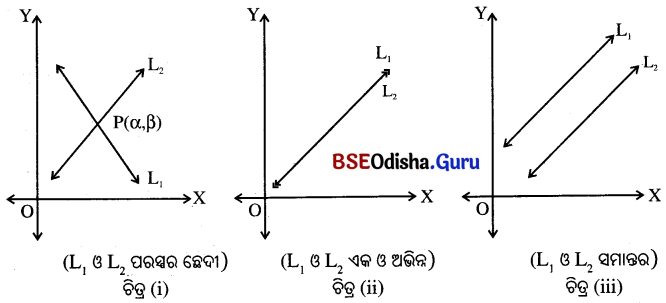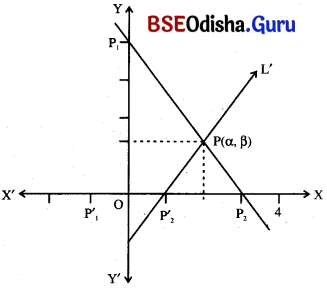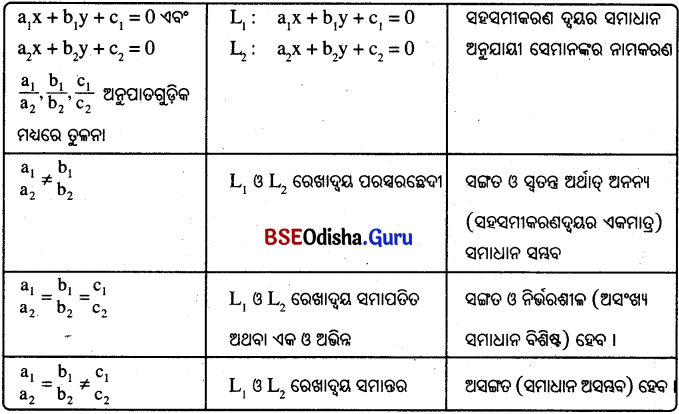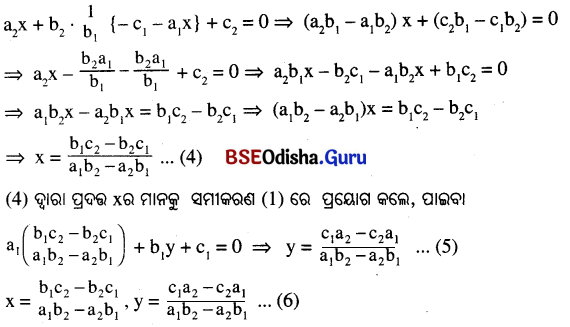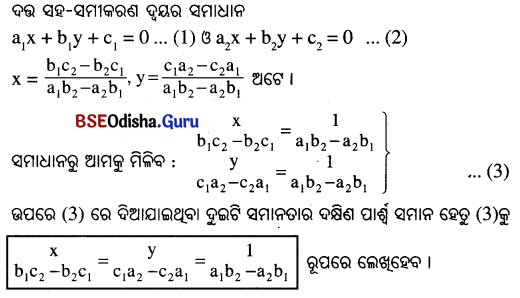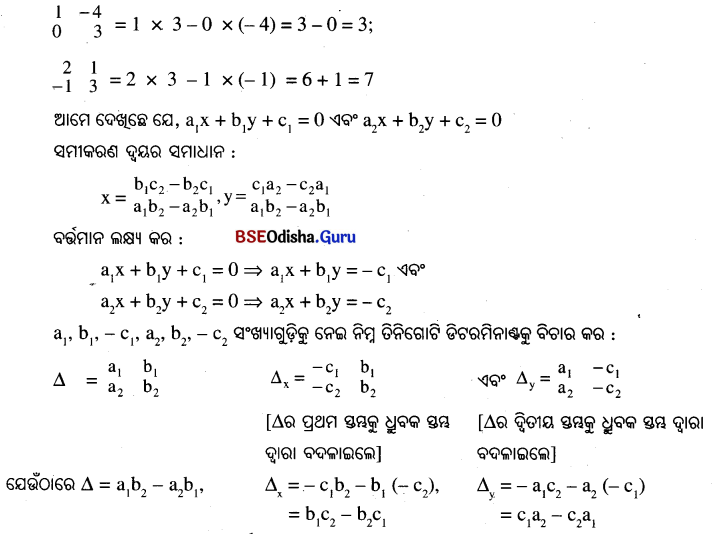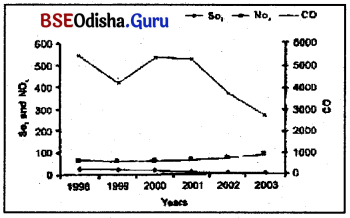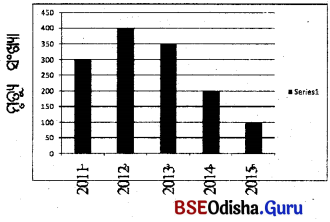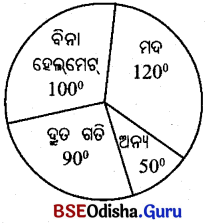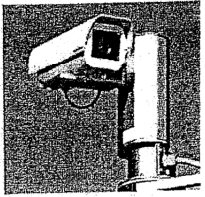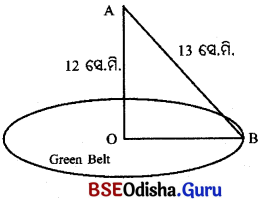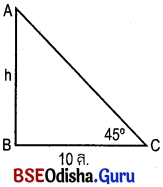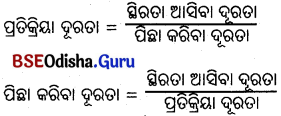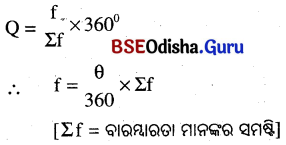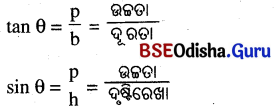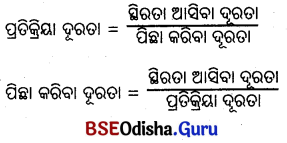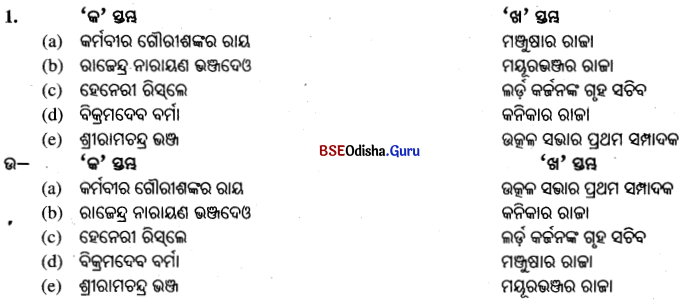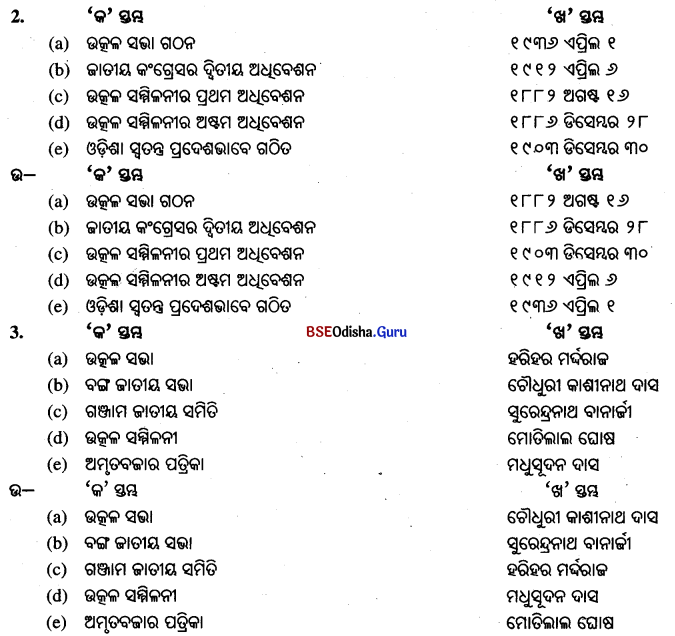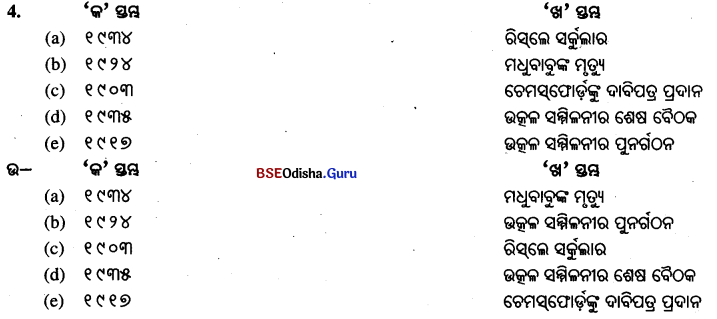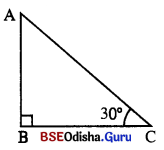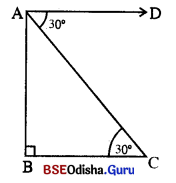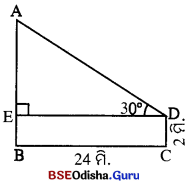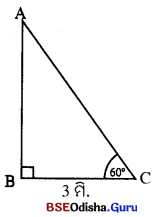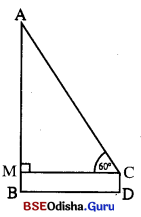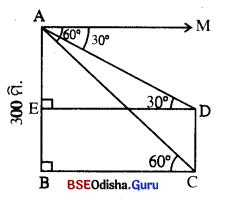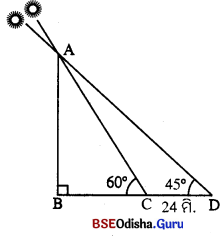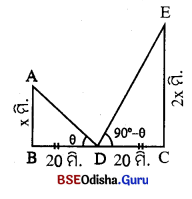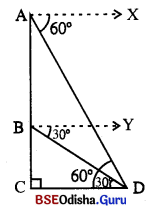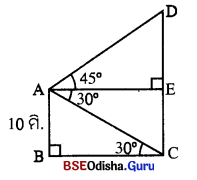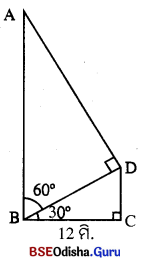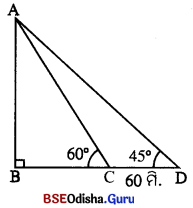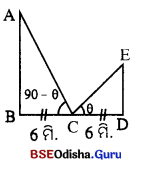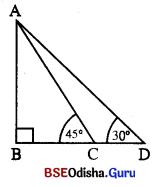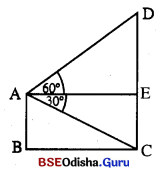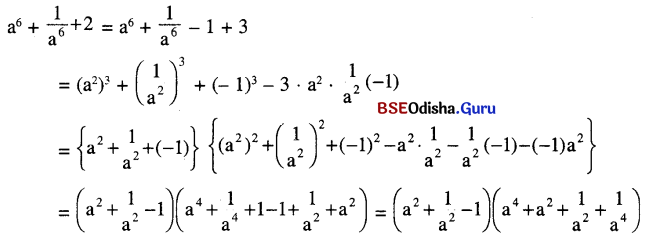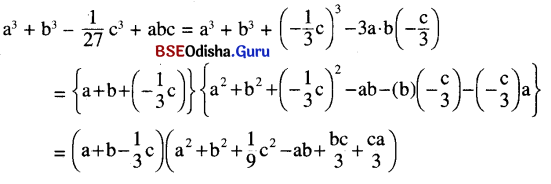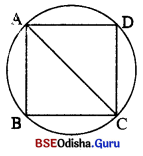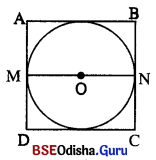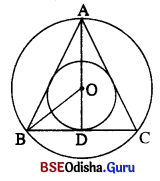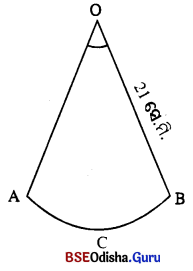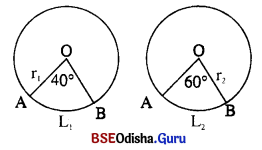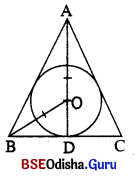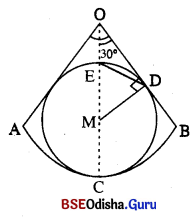Odisha State Board CHSE Odisha Class 12 Approaches to English Book 1 Solutions Unit 4 Text C: The Mushroom of Death Textbook Activity Questions and Answers.
Class 12th Alternative English Chapter 12 The Mushroom of Death Question Answers CHSE Odisha
The Mushroom of Death Class 12 Questions and Answers
Activity -11
Vocabulary:
Find out words from the passage, which mean more or less the following:
(i) to think deeply for a long time (3).
(ii) to spread something so that it will influence a lot of people (4)
(in) a written list of all the objects in a particular place (5)
(iv) Seen to be true of valid (explanation, argument, or statement) (6)
(v) Change in the genetic structure (12)
(vi) a similar action or decision in the past (15)
Answer:
(i) to think deeply for a long time-contemplate
(ii) to spread something so that it will influence a lot of people – propagate
(iii) a written list of all the objects in a particular place – inventory
(iv) Seen to be true of valid (explanation, argument, or statement) -plausible
(v) Change in the genetic structure -genetic mutations.
(vi) a similar action or decision in the past – historical precedent

Activity-12
Link Words:
Choose the correct alternatives and rewrite the sentences after removing the brackets.
(a) I understand your point of view. (However / Although), I don’t agree to it.
(b) Ramesh had lived in this village for 20 years (Even though / Nevertheless) the villagers still considered him an outsider.
(c) He has lived next door to us for a year, (yet / however), we hardly even seen him.
(d) I walked up the stairs cautiously. (Even / though) I nearly slipped twice.
(e) He has refused entry to the USA. (Though / Instead) he was forced to return to India instead.
(f) Someone of his poems was published in newspapers and magazines (so that / consequently) he thought of himself as an established poet.
Answer:
(a) I understand your point of view. However, I don’t agree to it.
(b) Ramesh had lived in this village for 20 years. Nevertheless, the villagers still considered him an outsider.
(c) He has lived next door to us for a year, yet, we hardly even seen him.
(d) I walked up the stairs cautiously even I nearly slipped twice.
(e) He has refused entry to the USA. He was forced to return to India instead.
(f) Someone of his poems was published in newspapers and magazines so he thought of himself as an established poet.
Activity – 15
Cohesive Devices: Link Words
Predict whether the following words present an addition, a result, or a contrast.
(a) Those events have taught us a great deal about nuclear war’s potential physical and biological impact. But ………………….(1)
(b) The light ……………………… causes thermal effects that depend upon the thermal energy incident on the skin of man. Also ………………………. (4)
(c) Authorised unclassified estimates indicate that world arsenals contain about 50,000 weapons, although ………………………… (5)
(d) The impact of the Hiroshima bomb was geographically limited thus ………………………… (2)
(e) The consequences can be a kind that was not even contemplated till recently, that is ………………………. (3).
(f) The fireball spreads out to affirm the distinctive mushroom could and ………………………… (5)
Answer:
(a) Those events have taught us a great deal about nuclear war’s potential physical and biological impact. But it must be remembered that the cities of Hiroshima and Nagasaki experienced only a single explosion each of a weapon much smaller in field than many of those stockpiled in world nuclear arsenals today, (addition)
(b) The light ………………… causes thermal effects that depend upon the thermal energy incident on the skin of man. Also …………….. (addition)
(c) Authorised unclassified estimates indicate that world arsenals contain about 50,000 weapons, although …………………… (contrast)
(d) The impact ofthe Hiroshima bomb was geographically limited thus …………………… (result)
(e) The consequences can be a kind that was not even contemplated till recently, that is …………………….. (addition)
(f) The fireball spreads out of firm the distinctive mushroom could and ……………………. (addition)

Activity-14(A)
Say which tense is the following sentences in:
(1) Those events have taught us a great deal ____________.
(2) The bomb dropped in Hiroshima released ____________.
(3) All the energy of the explosion is added ____________.
(4) If the explosion occurs close ____________.
(5) It may be better ____________.
(6) As the fireball rises ____________ it spreads ____________.
(7) He became an engineer.
(8) She played well
(9) She took my photograph.
Answer:
(1) Present tense
(2) Past tense
(3) Present tense
(4) Present tense
(5) Present tense
(6) Present tense
(7) Past tense
(8) Past tense
(9) Past tense
Extra Activity – (Miscellaneous)
(c) Directions: Pick up synonyms of the words from the words which follow:
Question 1.
Composure:
(a) Assumed attitude
(b) Liberty or musical
(c) Restlessness
(d) Work tranquility
Answer:
(d) Work tranquility
Question 2.
Implicate:
(a) to insult
(b) doubt
(c) involve
(d) make clear
Answer:
(c) involve
Question 3.
Concert:
(a) agreement
(b) beauty
(c) power
(d) yielding
Answer:
(c) power

Question 4.
Mitigate:
(a) to heal
(b) soften
(c) pardon
(d) send on a mission
Answer:
(b) soften
Question 5.
Buoyant:
(a) childlike
(b) brisk
(c) sturdy
(d) light-hearted
Answer:
(c) sturdy
Question 6.
Unalloyed:
(a) not connected
(b) calm
(c) absolute and complete
(d) inferior
Answer:
(c) absolute and complete
Question 7.
Blandishment
(a) slanders
(b) flattering speech
(c) thieveries
(d) immaturities
Answer:
(b) flattering speech
Question 8.
Propulsive:
(a) explosive
(b) disgusting
(c) impatient
(d) impelling to action
Answer:
(d) impelling to action
Question 9.
Athorart:
(a) crosswise
(b) following
(c) flattened out
(d) just ahead
Answer:
(a) crosswise
Question 10.
Flagging:
(a) becoming afraid
(b) hesitation
(c) growing weak
(d) limping
Answer:
(c) growing weak
Question 11.
Intransigence:
(a) power
(b) bitter criticism
(c) obstinate unwillingness to agree
(d) great anger
Answer:
(c) obstinate unwillingness to agree
Question 12.
Rectify:
(a) to command
(b) destroy
(c) correct
(d) build
Answer:
(c) correct

Question 13.
Incitement:
(a) timmil
(b) calm
(c) stimulus
(d) noise
Answer:
(c) stimulus
Question 14.
Devoid:
(a) evasive
(b) hopeless
(c) lacking
(d) stupid
Answer:
(c) lacking
Question 15.
Resolved:
(a) dummerised
(b) dispelled
(c) strengthened
(d) tonglad
Answer:
(b) dispelled
Question 16.
Privy:
(a) dishonest
(b) caution
(c) secretly aware
(d) quiet
Answer:
(c) secretly aware
Question 17.
Differentiation:
(a) distinction
(b) caution or grounds of difference
(c) argument
(d) quiet
Answer:
(a) distinction
Question 18.
Condon:
(a) pile of logs
(b) smokeless gun powder
(c) line of people as a guard
(d) heavy clock
Answer:
(c) line of people as a guard
Question 19.
Pilfer:
(a) to gossip
(b) steal
(c) trifle
(d) loiter
Answer:
(b) steal
Question 20.
Lore:
(a) sentiment
(b) body of tradition
(c) suspicion
(d) fabestories
Answer:
(b) body of tradition
Question 21.
Baleful:
(a) harmful
(b) kind
(c) happy
(d) dark
Answer:
(a) harmful

Question 22.
Hallowed:
(a) old
(b) decayed
(c) sacred
(d) mellowed
Answer:
(c) sacred
Question 23.
Liar:
(a) landowner
(b) evil glance
(c) den
(d) trap
Answer:
(c) den
Question 24.
Bridle:
(a) to bow
(b) insult
(c) show anger
(d) trap
Answer:
(c) show anger
Question 25.
Slothful:
(a) flit
(b) stubborn
(c) lazy
(d) ignorant
Answer:
(c) lazy
Question 26.
Shift:
(a) to manage
(b) show
(c) slide
(d) drag one’s feet
Answer:
(a) to manage
Question 27.
Gruesome:
(a) dark
(b) rude
(c) painful
(d) ghostly
Answer:
(d) ghostly
Question 28.
Be token:
(a) to be a sign of
(b) invite
(c) threaten
(d) enrich
Answer:
(a) to be a sign of

Question 29.
Last:
(a) unless
(b) but
(c) for fear
(d) enrich
Answer:
(a) unless
Question 30.
Requite:
(a) to repay
(b) demand
(c) complete
(d) need
Answer:
(a) to repay
Question 31.
Mite:
(a) precious stone
(b) small object
(c) strength
(d) probability
Answer:
(b) small object
Question 32.
Cite:
(a) to memorize
(b) use clearly
(c) point out with a figure
(d) quote
Answer:
(d) quote
Question 33.
Satellite:
(a) sparkling
(b) ruler
(c) gem
(d) servile attention
Answer:
(d) servile attention
Question 34.
Respite:
(a) breath
(b) fatigue
(c) ill will
(d) interval of rest
Answer:
(d) interval of rest
Question 35.
Incite:
(a) to cut of
(b) perceive the inner nature of the thing
(c) arouse or stair up
(d) commence
Answer:
(c) arouse or stair up
TEST – II
Directions
Pick up synonyms of the words from die list of words that follow every word:
Question 1.
Parasite:
(a) disease
(b) a loss of motion
(c) a hanger on
(d) an insect
Answer:
(c) a hanger on
Question 2.
Rite:
(a) solemn activity
(b) justice
(c) straitness
(d) a cleaning
Answer:
(a) solemn activity

Question 3.
Apposite:
(a) appropriate
(b) highly unpleasant
(c) fulish
(d) painful
Answer:
(a) appropriate
Question 4.
Chafe:
(a) torudicile
(b) to fret and fume
(c) to cheat
(d) to etch
Answer:
(b) to fret and fume
Question 5.
Bald:
(a) broad
(b) rash
(c) unadorned
(d) insulting
Answer:
(c) unadorned
Question 6.
Clean:
(a) to get bit by bit
(b) speak
(c) to discover
(d) to polish
Answer:
(a) to get bit by bit
Question 7.
Shard:
(a) part of a plough
(b) swindle
(c) fragment
(d) layer of earth
Answer:
(c) fragment
Question 8.
Barge:
(a) to thrush forward
(b) to brag
(c) to smell
(d) to oppose
Answer:
(a) to thrush forward
Question 9.
Claim:
(a) care
(b) fortress
(c) well
(d) heap of stone
Answer:
(d) heap of stone
Question 10.
Wrought:
(a) made or fashioned
(b) broken
(c) complicated
(d) strengthened
Answer:
(a) made or fashioned
Question 11.
Drab:
(a) dull or colorless
(b) tired
(c) discouraged
(d) shabby
Answer:
(a) dull or colorless

Question 12.
Err:
(a) to weaver
(b) to make a mistake
(c) to delay
(d) to become confused
Answer:
(b) to make a mistake
Question 13.
Lode:
(a) weight
(b) discouragement
(c) power
(d) vein of
Answer:
(d) vein of
Question 14.
Cadge:
(a) to be cautious
(b) to sponge
(c) to make a reservation
(d) to snatch
Answer:
(b) to sponge
Question 15.
Irk:
(a) to scold
(b) to make a werry fall
(c) to urge
(d) to annoy
Answer:
(d) to annoy
Question 16.
Butt:
(a) blunt ness
(b) stupidity
(c) target
(d) support
Answer:
(c) target
Question 17.
Wield:
(a) to throw
(b) to use with full effect
(c) to grap
(d) to cut
Answer:
(b) to use with full effect
Question 18.
Wreck:
(a) to twist
(b) to inflict
(c) to emit an unpleasant odor
(d) cadence
Answer:
(c) to emit an unpleasant odor
Question 19.
Lilt:
(a) laughter
(b) physical beauty
(c) hopefulness
(d) cadence
Answer:
(d) cadence
Question 20.
Wrath:
(a) anger
(b) garland of flower
(c) phantom
(d) halo
Answer:
(c) phantom
Question 21.
Chaff
(a) banter
(b) grist
(c) abrasion
(d) comfort
Answer:
(c) abrasion

Question 22.
Crypt:
(a) puzzle
(b) silence
(c) brevity
(d) vault
Answer:
(d) vault
Question 23.
Tilt:
(a) cultivated land
(b) dispute
(c) balance
(d) point of view
Answer:
(d) point of view
Question 24.
Perturb:
(a) to upset
(b) to cause doubt
(c) to burden
(d) to test
Answer:
(c) to burden
Question 25.
Usurp:
(a) to yield
(b) to cause doubt
(c) to burden
(d) to test
Answer:
(c) to burden
Question 26.
Recriminate:
(a) to resist authority
(b) to accuse in return
(c) to respect an illegal act
(d) to restate
Answer:
(b) to accuse in return
Question 27.
Ensconce:
(a) to surround
(b) promote
(c) honor
(d) to settle comfortably
Answer:
(d) to settle comfortably
Question 28.
Elude:
(a) to evade
(b) to omit or leave out
(c) to make mention of
(d) to deceive
Answer:
(a) to evade
Question 29.
Rifle:
(a) to disturb
(b) to shoot
(c) to seize
(d) to plunder or ransack
Answer:
(d) to plunder or ransack

Question 30.
Mollify:
(a) to irritate
(b) to appease
(c) to amuse
(d) to limit the meaning of
Answer:
(b) to appease
Question 31.
Recoup:
(a) to recover
(b) to trap
(c) to strengthen
(d) to shuffle
Answer:
(a) to recover
Question 32.
Substantiate:
(a) to weaken
(b) to substitute
(c) to verify
(d) to make wealthy
Answer:
(c) to verify
Question 33.
Solicit:
(a) to command
(b) to worry
(c) to sympathise with
(d) to ask for
Answer:
(d) to ask for
Question 34.
Embroil:
(a) to anger
(b) to involve in the discussion
(c) to encompass
(d) to bring to boiling point
Answer:
(b) to involve in the discussion
Question 35.
Envisage:
(a) to face
(b) to seek
(c) to understand
(d) to foresee in imagination
Answer:
(d) to foresee in imagination
TEST – III
Question 1.
Compound:
(a) to emphasize
(b) to confuse
(c) to put together
(d) to compress
Answer:
(c) to put together

Question 2.
Beguile:
(a) to charm
(b) to become shy
(c) to fetter
(d) to smile at
Answer:
(a) to charm
Question 3.
Slaken:
(a) to grow weary
(b) to hampen
(c) to become less active
(d) to quentch
Answer:
(c) to become less active
Question 4.
Submerge:
(a) to walk on
(b) to sink
(c) to appear
(d) to join together
Answer:
(b) to sink
Question 5.
Replenish:
(a) to spread around
(b) to fulfill
(c) to give up
(d) to provide a new supply for
Answer:
(d) to provide a new supply for
Question 6.
Convulse:
(a) to shake violently
(b) to restrict
(c) to befuddle
(d) to impel
Answer:
(a) to shake violently
Question 7.
Placade:
(a) tofettenout
(b) to pacify
(c) to annoy
(d) to make secure
Answer:
(b) to pacify
Question 8.
Ingratiate:
(a) to make ungrateful
(b) to force one’s way in
(c) to place oneself in a favorable position
Answer:
(c) to place oneself in a favorable position

Question 9.
Augury:
(a) dispute
(b) alter
(c) place of refuse
(d) omen
Answer:
(d) omen
Question 10.
Flagrant:
(a) widely scattered
(b) poisonous
(c) scandalous
(d) absurd
Answer:
(c) scandalous
Question 11.
Ferret:
(a) to search
(b) to trap
(c) to hide
(d) to flee
Answer:
(a) to search
Question 12.
Impediment:
(a) opposition
(b) told
(c) obstruction
(d) disparagement
Answer:
(c) obstruction
Question 13.
Nomenclature:
(a) adoption of a pen name
(b) system of names
(c) parliamentary rule
(d) history of names
Answer:
(b) system of names
Question 14.
Cumulative:
(a) serious
(b) swollen
(c) rich
(d) steadily increasing
Answer:
(d) steadily increasing
Question 15.
Pedantic:
(a) hanging
(b) making a needless display of leaming
(c) ignorant
(d) solemn
Answer:
(b) making a needless display of leaming
Question 16.
Disparate:
(a) radically different
(b) discouraged
(c) reckless
(d) stingy
Answer:
(a) radically different

Question 17.
Regime:
(a) order of procedure
(b) system of government
(c) recipe for cooking
(d) peacefulness
Answer:
(b) system of government
Question 18.
Inimical:
(a) favorable
(b) unique
(c) unfriendly
(d) wicked
Answer:
(c) unfriendly
Question 19.
Deplete:
(a) to flatten
(b) to conquer
(c) to finish
(d) to exhaust
Answer:
(d) to exhaust
Question 20.
Despensation:
(a) distribution
(b) dismissal
(c) surrender of power
(d) delaying
Answer:
(a) distribution
Question 21.
Circuitous:
(a) surrounded
(b) dizzy
(c) round-about
(d) deceptive
Answer:
(c) round-about
Question 22.
Scintilla
(a) Knsal
(b) trace
(c) veil
(d) brilliant surface
Answer:
(d) brilliant surface
Question 23.
Conversant:
(a) well-mannered
(b) talkative
(c) argumentative
(d) familiar
Answer:
(d) familiar
Question 24.
Villify:
(a) to lie
(b) to prove
(c) to defame
(d) to defraud
Answer:
(c) to defame

Question 25.
Noxious:
(a) dark
(b) injurious
(c) hateful
(d) evil-smelling
Answer:
(b) injurious
Question 26.
Cursory:
(a) informal
(b) penetrating
(c) angry
(d) rapid and superficial
Answer:
(d) rapid and superficial
Question 27.
Actuate:
(a) to explain
(b) to put in action
(c) to furnish proof
(d) to prepare a financial statement
Answer:
(b) to put in action
Question 28.
Flaceid:
(a) weak
(b) pale
(c) dull
(d) scared
Answer:
(b) pale
Question 29.
Dire:
(a) severe
(b) wicked
(c) dreadful
(d) hopeless
Answer:
(c) dreadful
Question 30.
Sequestered:
(a) quiet
(b) shady
(c) safe
(d) secluded
Answer:
(d) secluded
Question 31.
Inconceivable:
(a) unimportant
(b) unthinkable
(c) improbably
(d) inconsequential
Answer:
(b) unthinkable
Question 32.
Inopportune:
(a) untimely
(b) not instant
(c) unreasonable
(d) leisurely
Answer:
(a) untimely

Question 33.
Tactless:
(a) considerable
(b) sharp
(c) pertains to the origin of touch
(d) strong
Answer:
(c) pertains to the origin of touch
Question 34.
Inconclusive:
(a) not apparent
(b) not decisive
(c) positive
(d) unanswerable
Answer:
(b) not decisive
Question 35.
Disputation:
(a) controversy
(b) formal enquiry
(c) dissertation
(d) distribution
Answer:
(a) controversy
TEST-IV
Question 1.
Benign:
(a) radiant
(b) religion
(c) kindly
(d) hopeful
Answer:
(c) kindly
Question 2.
Dictum:
(a) enunciation
(b) law
(c) autocratic ruler
Answer:
(b) law

Question 3.
Appurtenance:
(a) accessory
(b) apt retort
(c) personal characteristic
(d) insult
Answer:
(a) accessory
Question 4.
Asperity:
(a) Ambition
(b) eagerness
(c) promptness
(d) harshness
Answer:
(d) harshness
Question 5.
Cogent:
(a) brief
(b) wise
(c) convincing
(d) mathematical term
Answer:
(c) convincing
Question 6.
Feline:
(a) delicate
(b) catlike
(c) very feminine
(d) slack
Answer:
(b) catlike
Question 7.
Sibilant:
(a) talkative
(b) secret
(c) soft
(d) hissing
Answer:
(d) hissing
Question 8.
Jocose:
(a) merry
(b) fat
(c) clumsy
(d) foolish
Answer:
(a) merry
Question 9.
Mendacious:
(a) bitter
(b) beggarly
(c) boastful
(d) untrustful
Answer:
(d) untrustful
Question 10.
Capitulate:
(a) to emphasize
(b) to rush
(c) to surrender
(d) to overturn
Answer:
(c) to surrender
Question 11.
Recapitulate:
(a) to recover property
(b) to sum up
(c) to repeat oneself tiresomely
(d) to surrender again
Answer:
(b) to sum up

Question 12.
Celerity:
(a) grace
(b) fame
(c) slipperiness
(d) speed
Answer:
(b) fame
Question 13.
Head:
(a) to pay attention
(b) to team
(c) to hesitate
(d) to be positive
Answer:
(a) to pay attention
Question 14.
Rack:
(a) to fleece
(b) to pile up
(c) to torture
(d) to shatter
Answer:
(c) to torture
Question 15.
Squib:
(a) young pigeon
(b) pm point
(c) feather
(d) brief with paragraph
Answer:
(d) brief with paragraph
Question 16.
Bak:
(a) to luxuriate
(b) to be modest
(c) to lie down
(d) to moisten
Answer:
(c) to lie down
Question 17.
Coy:
(a) dainty
(b) glamorous
(c) petish
(d) demure
Answer:
(d) demure
Question 18.
Blurt:
(a) effusive description
(b) impulsive utterance
(c) splash of color
(d) stain
Answer:
(b) impulsive utterance
Question 19.
Want:
(a) need
(b) wish
(c) habit
(d) refusal
Answer:
(c) habit
Question 20.
Refex share:
(a) to splice
(b) to split apart
(c) to unload
(d) to brace
Answer:
(b) to split apart
Question 21.
Pore:
(a) to perspire
(b) to read carefully
(c) to look serious
(d) to rain hard
Answer:
(b) to read carefully
Question 22.
Tome:
(a) large book
(b) mausoleum
(c) echo
(d) aulted roof
Answer:
(a) large book

Question 23.
Marie:
(a) grit
(b) stone
(c) gloom
(d) smudge
Answer:
(c) gloom
Question 24.
Drain:
(a) to shift
(c) to emaciate
(b) to stretch
(d) to exhaust
Answer:
(d) to exhaust
Question 25.
Feint:
(a) to challenge
(b) to make a sham
(c) to withdraw
(d) to grow weak
Answer:
(b) to make a sham
Question 26.
Brawl:
(a) to shout
(b) to cry
(c) to quarrel noisily
(d) to revolt
Answer:
(c) to quarrel noisily
Question 27.
Crime:
(a) frost
(b) dirt
(c) lubricant
(d) grain to be grown
Answer:
(b) dirt
Question 28.
Gad
(a) to stare
(b) to tease
(c) to rush about
(d) to criticize
Answer:
(c) to rush about
Question 29.
Shade:
(a) to secret
(b) amount
(c) privacy
(d) slight difference
Answer:
(a) to secret

Question 30.
Shidge:
(a) soft mud
(b) menial worker
(c) slattern
(d) bookish
Answer:
(a) soft mud
Question 31.
Scrimp:
(a) to shrivel
(b) to be frugal
(c) to be selfish
(d) to be fussy
Answer:
(b) to be frugal
Question 32.
Drub:
(a) to bounce
(b) to leaf
(c) to beat
(d) to be stupid
Answer:
(c) to beat
Question 33.
Dross
(a) lustre
(b) dull surface
(c) mental depression
(d) impurity
Answer:
(d) impurity
Question 34.
Straff
(a) to discipline
(b) to bombard
(c) to rub
(d) to slice
Answer:
(d) to slice
Question 35.
Wend:
(a) to direct one’s course
(b) to wander
(c) to weave
(d) to sloop
Answer:
(a) to direct one’s course
TEST-V
Question 1.
Blunt:
(a) abrupt manner
(b) direct insult
(c) mainshock
(d) retarded shock
Answer:
(c) mainshock
Question 2.
Prime:
(a) to supply with facts
(b) to begin
(c) to assist
(d) to strut
Answer:
(a) to supply with facts

Question 3.
Bode:
(a) to dwell
(b) to foreshadow
(c) to endure
(d) to wait
Answer:
(b) to foreshadow
Question 4.
Wrest:
(a) to grapple with an opponent
(b) to twist into a distorted shape
(c) to compiler
(d) to stretch forcibly
Answer:
(d) to stretch forcibly
Question 5.
Frond:
(a) decorative border
(b) palm leaf
(c) thick branch
(d) prong
Answer:
(b) palm leaf
Question 6.
Mite:
(a) to come up to or touch
(b) to make suitably
(c) to allot
(d) to challenge
Answer:
(b) to make suitably
Question 7.
Flay:
(a) to whip
(b) to spread out
(c) to splice together
(d) to strip off the skin
Answer:
(b) to spread out
Question 8.
Tend:
(a) to sympathize
(b) to incline
(c) to delay
(d) to offer
Answer:
(b) to incline
Question 9.
Pert:
(a) hide
(b) wealth
(c) track of a wild animal
(d) equipment
Answer:
(b) wealth
Question 10.
Tant:
(a) stingy
(b) hard
(c) secretive
(d) tightly drawn
Answer:
(d) tightly drawn
Question 11.
Track:
(a) climb
(b) to travel by wagon
(c) to deceive
(d) to carry
Answer:
(a) climb

Question 12.
Design:
(a) to condescend
(b) to pretend
(c) to disparage
(d) to refuse
Answer:
(a) to condescend
Question 13.
Spume:
(a) spray
(b) anger
(c) foam
(d) noise
Answer:
(c) foam
Question 14.
Effectuate:
(a) to accomplish
(b) begin
(c) practice
(d) end
Answer:
(a) to accomplish
Question 15.
Perceptive:
(a) wise
(b) alert
(c) discerning
(d) precise
Answer:
(c) discerning
Question 16.
Syndrome:
(a) council
(b) combination of symptoms
(c) fetish
(d) monopoly
Answer:
(b) combination of symptoms
Question 17.
Fastidious:
(a) literal
(b) clear
(c) discrete
(d) fussy
Answer:
(d) fussy
Question 18.
Apotheosis:
(a) revelation
(b) pithy saying
(c) perfect example
(d) rhetorical address
Answer:
(c) perfect example
Question 19.
Pristine:
(a) beautiful
(b) prudish
(c) shining
(d) original
Answer:
(d) original
Question 20.
Forbearance:
(a) patience
(b) foresight
(c) stubbornness
(d) inherited traits
Answer:
(a) patience

Question 21.
Coercive:
(a) stick
(b) compelling
(c) persuasive
(d) complaining
Answer:
(b) compelling
Question 22.
Hybrid:
(a) pure
(b) carefully selected
(c) mixed
(d) hardy
Answer:
(c) mixed
Question 23.
Sully:
(a) to ridicule
(b) leap forth
(c) deceive
(d) tarnish
Answer:
(d) tarnish
Question 24.
Blatant:
(a) conceited
(b) unpleasantly noise
(c) brutal
(d) openly hostile
Answer:
(c) brutal
Question 25.
Peregrination:
(a) land measurement
(b) uncertainty
(c) travel
(d) scheme
Answer:
(b) uncertainty
Question 26.
Oblogay:
(a) abusive language
(b) state of being of forgotten
(c) discussion
(d) burial rite
Answer:
(a) abusive language
Question 27.
Mettle:
(a) mood
(b) courage
(c) sternness
(d) belligerence
Answer:
(b) courage
Question 28.
Infraction:
(a) small portion
(b) collision
(c) oversight
(d) violation of law
Answer:
(d) violation of law

Section – C
In Text – A you are exposed to a futuristic view of the scientific and technological world that is likely to emerge by 2050. But will the world survive so long? If your answer is in negative what possible threats do you apprehend?
(i) __________________
(ii) __________________
(iii) __________________
Discuss the possible threats in consultation with others. Now read Amalendu Bandopadhyay’s, ‘The Mushroom of Death’ and find out what dangers, the writer thinks to lie ahead for humanity.
The Mushroom of Death Summary in English
Summary:
The bombing of Hiroshima and Nagasaki has taught us the potential physical and biological impact of a nuclear war. The bomb dropped on Hiroshima released energy equalling 20 kilotons of chemical explosives. Now, the question is what will happen if many modem nuclear weapons are exploded? It is clear that the consequences can be of kind that smoke from massive nuclear-ignited urban fires can cause a worldwide disruption in the planet’s weather and climate. The effects of an air burst will form an extremely strong shock wave that propagates outward rendering the air luminous and creating a fireball in the immediate vicinity of the burst.
If the explosion takes place close to the surface, there will be a shock wave coupled to the ground and a crater can be dug in the ground. Gamma rays and neutrons also release from an air burst. While detonating a nuclear weapon, it releases heat of about tens of millions of degrees Celsius into the nearby air. Even buildings of heavy construction will collapse. Scientists are of the view that the smoke produced by the burning of cities in after match of a nuclear war may significantly affect the earth’s climate for long periods of time. There will be a substantial decrease in precipitation.

Analytical Outlines
- There was a bombing on Hiroshima and Nagasaki.
- It has brought us the potential physical impact.
- It has also brought us a biological impact.
- It was the impact of nuclear war.
- The bomb was dropped on Hiroshima.
- It released high energy.
- It was equal to 20 kilotons of chemical explosives.
- Then the writer asked a very powerful question.
- What will happen if many modem nuclear weapons are exploded?
- It is clear that the consequences will be far more severe than in 1945.
- The consequences can be of such a kind.
- The smoke from massive nuclear-ignited urban fires.
- It can cause a worldwide disruption.
- It can cause it in the planet’s weather and climate.
- It is the effect of an air burst.
- It will form an extremely strong shock wave.
- It propagates outward rendering of the air luminous.

- It creates a fireball.
- The fireball is created in the immediate vicinity of the burst.
- When the explosion takes place close to the surface.
- There will be a shock wave coupled to the ground.
- The aerator can be dug in the ground.
- Gamma rays are released from an air burst.
- Neutrons are also released from this air burst.
- A nuclear weapon is detonated.
- It releases heavy heat.
- It is about tens of millions of degrees Celcius.
- It releases it into the nearby am
- Even buildings of heavy construction will collapse.
- Scientists provide opinions about it.
- They talk about the smoke produced by burning cities.
- This burning is in the aftermath of a nuclear war.
- It may significantly affect the earth’s climate.
- It will affect it for a long period of time.
- There will be a substantial decrease in the precipitation
Meanings Of Difficult Words
arsenals – stores of weapons.
deployment – organizing troops and equipment for immediate action.
incident on – something that occurs in connection with something else.
gamma rays – high-frequency rays emitted from a radioactive atom.
inventory – lit of articles.
unclassified – no longer secret.
megaton – one million tons.
buoyant – capable of keeping an object afloat.
precipitation – condensation in the atmosphere as rain, snow or hait

aftermath – a situation resulting from an important event.
consequences – results, aftermaths
obtain – get
devastating – terrible, horrible, dangerous
vicinity – in the nearby area,
initial – beginning, at the outset.
lethal – deadly, life-killing, dangerous.
plausible – evident, having proofs.
thermal – relating to heat or temperature
precipitation – rainfall.
Read More:
![]()
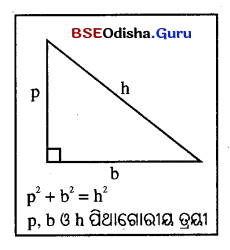 ପ୍ରଶ୍ନନୁସାରେ, x2 + (x + 1)2 = (2x – 1)2
ପ୍ରଶ୍ନନୁସାରେ, x2 + (x + 1)2 = (2x – 1)2![]()
![]()

